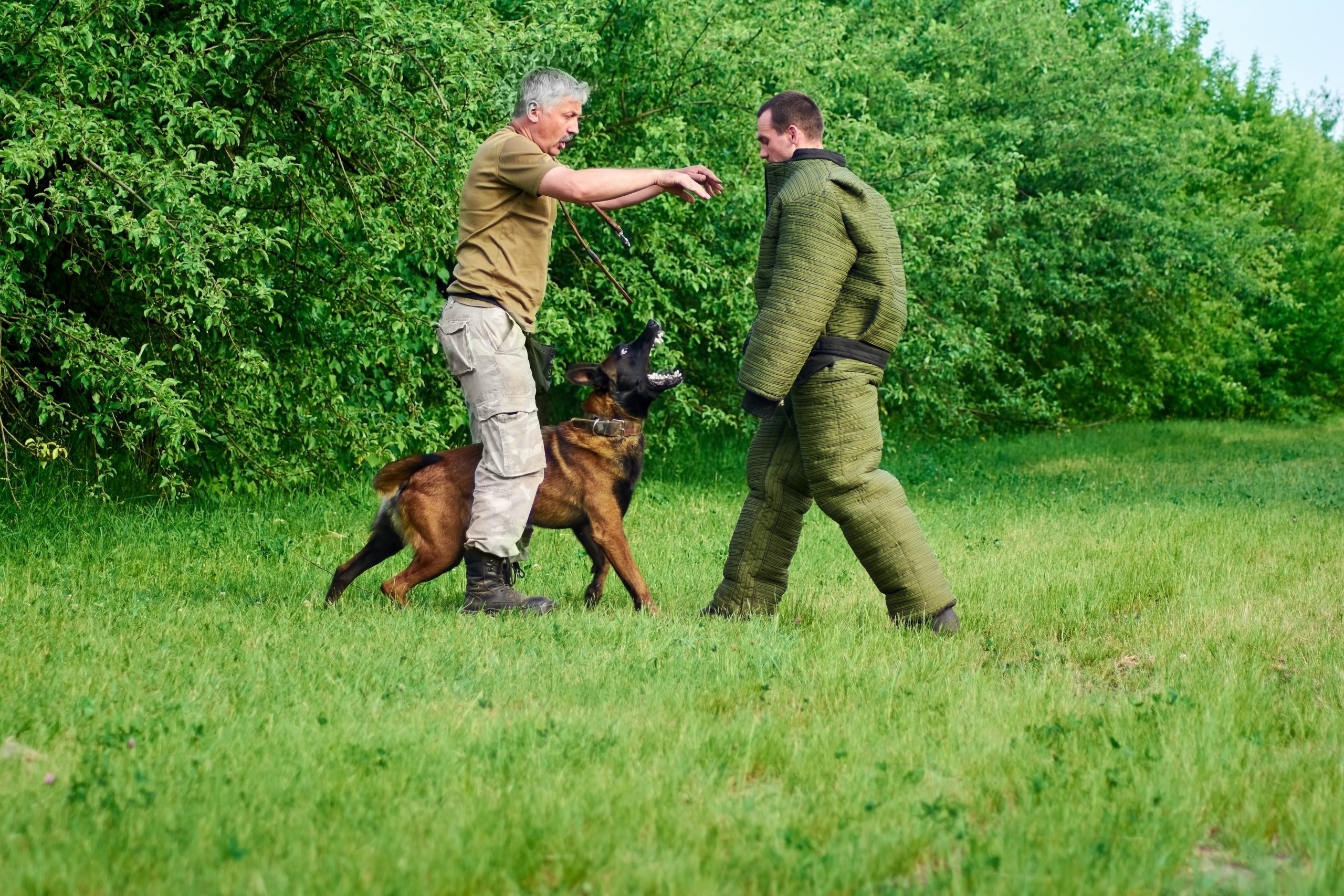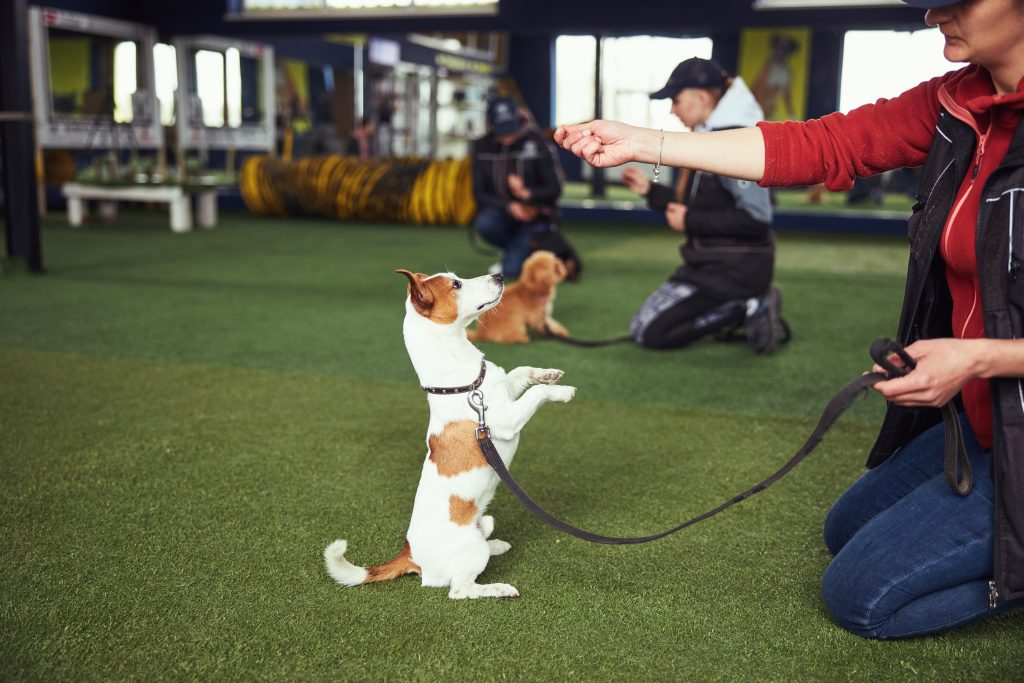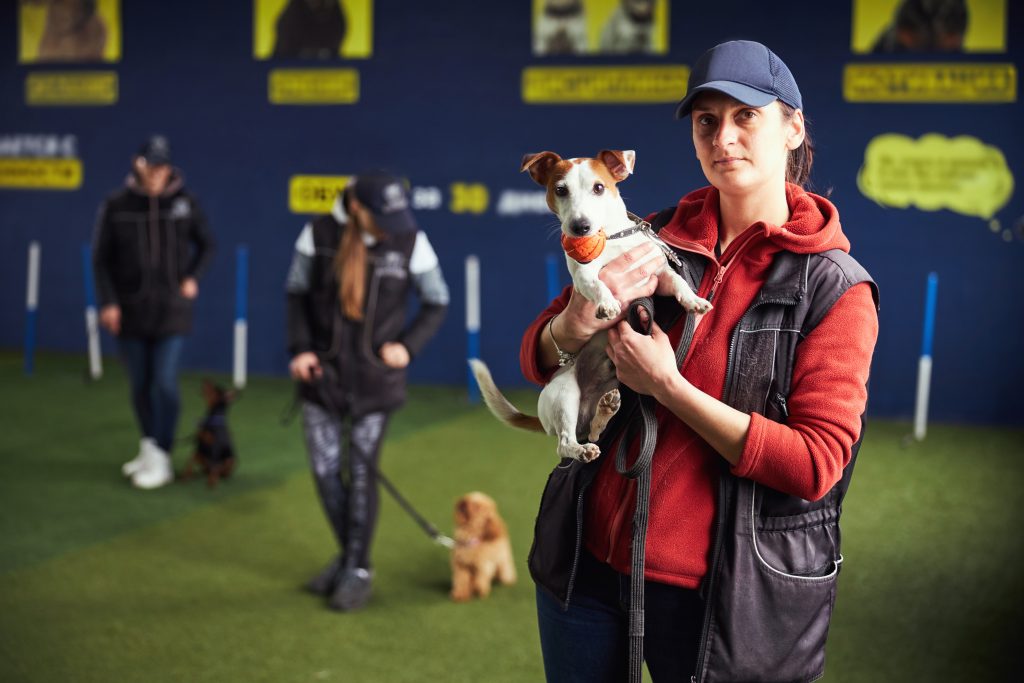The Top 5 Qualities To Look For In A Professional Dog Trainer

Are you a new pet owner looking for a professional dog trainer? Or maybe you’ve had a furry friend for a while now but are struggling with obedience and behavior issues. A well-trained dog can make all the difference in the world, and finding the right trainer is essential. It’s not just about teaching your dog to sit or stay; it also involves developing a stronger bond with your pup and tackling unwanted behavior. In this article, we’ll discuss the top 5 qualities to look for in a professional dog trainer: positive reinforcement skills, hands-on experience, training certifications, effective communication skills, and knowledge of dog behavior. These qualities are essential for ensuring that the trainer is credible and competent in their work, leading to measurable success in your dog’s training.

1. Approach to Training
There are various approaches to dog training, each with its own set of benefits and drawbacks. It’s essential to choose the best one for your furry friend depending on their age, breed, and unique personality. Here, we will introduce some of the most common training techniques and their advantages.
Firstly, luring is an excellent way to teach basic obedience by encouraging the dog to follow food or a toy to correct behavior. This method works well with puppies and dogs that love food and play. With luring, you encourage the desired behavior and ignore any unwanted behavior.
Shaping is another approach that works well for challenging behaviors that chancing upon them can be challenging. You reinforce a dog’s successive approximation of the final behavior and starts by rewarding for any behavior that is close to the desired response. This method requires patience but it can be effective in teaching challenging tricks or correcting certain behaviors.
Targeting is the act of getting the dog to touch a specific object with a body part. For example, you hold your hand up, and the dog touches it with his/her nose. This method allows you to teach your dog commands easily and can eventually teach them more complicated tricks.
Modeling is another technique worth consideration. This method involves showing your dog the desired and unintended actions of other dogs. It works great if your dog has never performed a particular behavior. For instance, if your dog is still new to playing fetch, another dog demonstrating how to fetch can help him/her learn more quickly.
Capturing involves rewarding your dog when they perform a particular and desired behavior. For instance, each time they lie down at bedtime or before eating, giving them verbal praise can help reinforce the behavior and make it more consistent.
Lastly, mimicry is a training approach that involves the owner mimicking the dog’s behavior. This can help the dog feel more relaxed and receptive during training sessions. Here, it’s essential to observe the dog’s body language and behavior while teaching them to better understand their motivations.
2. Communication Skills
Effective communication skills are crucial for professional dog trainers to develop a strong relationship with their clients. It is important for trainers to actively listen to their clients’ concerns, understand their needs, and explain things in a clear and understandable way. Being able to effectively communicate with clients ensures that their expectations are met and helps to establish trust and rapport between the trainer and the client.
Understanding canine communication is equally important for a professional dog trainer. Dogs communicate through body language, vocalizations, and behaviors, and it is important for trainers to be able to interpret and respond appropriately to these cues. This includes understanding signs of stress, anxiety, fear, and aggression, as well as recognizing body language indicating playfulness and relaxation.
3. Professionalism
When it comes to dog training, professionalism is an essential quality that every trainer should possess. Not only is it important for trainers to have a deep understanding of canine behavior, effective communication skills, and the ability to teach and train dogs, but it is equally important that they exhibit a professional demeanor with their clients.
Professionalism is crucial because it can impact the success and reputation of a dog trainer’s business. Owners want to feel confident that their dog is receiving top-notch care and instruction, and working with a professional trainer can help provide that assurance. Therefore, a professional dog trainer should always arrive on time for their training sessions, dress appropriately, and communicate clearly with their clients in a positive and respectful manner.
In addition to these basic professional qualities, a professional trainer should also know their limits. If a particular dog’s behavioral issues are beyond their scope of expertise, they should be willing to refer the client to a specialist who can handle the situation more effectively. This shows both professionalism and integrity.
Maintaining appropriate privacy standards is also a key component of professionalism. Clients might share personal information about themselves or their dogs during training sessions, and it is the trainer’s responsibility to respect and protect their privacy. Ensuring that sensitive information is kept confidential and not shared with others outside of the agreed-upon context is a hallmark of a professional trainer.
Another aspect of professionalism is proper handling of payments and billing procedures. Trainers should clearly explain their fees and billing procedures upfront and keep accurate records of all transactions. A professional dog trainer knows that being transparent and reliable in this regard can help establish trust with clients.
Lastly, a professional trainer should maintain appropriate liability insurance to protect themselves and their clients in case of any accidents or incidents during training. While we all hope for the best, preparing for the worst is a hallmark of business professionalism in this field.
4. Cost-Effectiveness
Choosing a professional dog trainer can be a significant investment, and cost-effectiveness should be an essential consideration when selecting one. Paying an exorbitant amount of money for dog training does not necessarily mean you will be getting good results. Hence, it is imperative to find a trainer whose pricing structure is reasonable and offers value for money.
The cost of dog training is affected by many factors, including the trainer’s level of experience, the intensity of the training sessions, and the location of training. Additionally, the type of training method used and the trainer’s expertise in handling different dogs will impact the cost of the training. Training sessions could be offered through online courses or training classes. Therefore, the mode of training or classes chosen will dictate the cost you will incur.
When choosing a professional dog trainer, you need to ensure that you get the best services possible for your money. A good trainer should provide reasonably priced services that produce positive results in your furry friend’s behavior. A cost-effective trainer does not necessarily mean that they are cheap but offers affordable rates for their services.
It is essential to discuss the pricing structure and package deals with your chosen trainer beforehand. You need to ask about hidden costs or any other potential charges you might face when working with them. By doing so, you are assured that you get the best deal possible for your budget without surprise costs cropping up.
Comparing the rates of different dog trainers and analyzing the services they offer can help in making an informed decision. A cost-effective trainer who provides quality services that produce results is always the best person to work with. Ultimately, investing in high-quality training that yields positive results for your pet is necessary, and cost-effectiveness is a critical factor in making this decision.
5. Client References
If you are looking for a professional dog trainer, it’s essential to consider the trainer’s past clients’ feedback through client references. Obtaining client references from the trainer can give pet parents insights into how effective their training methods are and their success rate in addressing behavioral issues.
Client references come in different forms, such as testimonials from previous clients or reviews on online platforms, including Google, Yelp, or Facebook. By having access to these references, pet parents can learn about the trainer’s strengths, weaknesses, and overall experience in handling dogs with different behavioral problems.
Reading through testimonials or online reviews allows pet parents to get a sense of how satisfied other clients were with the trainer’s services. Previous clients will share their experiences working with the trainer, their dog’s progress, and how the trainer helped them overcome specific behavioral issues. With this information, pet parents can assess the effectiveness of a trainer’s approach, training methods, and overall success rate.
Before choosing a specific training program, requesting client references from the trainer enables pet parents to gauge the trainer’s level of customer satisfaction and prevent the risk of paying for substandard services. The feedback from previous clients can serve as the client’s guide in determining which training program to choose and whether or not they align with their expectations.

Conclusion
In conclusion, when looking for a professional dog trainer, pet parents need to research the different options available and compare them based on factors such as cost-effectiveness, training methods, and customer feedback. A competent dog trainer should provide quality services at an affordable price with proven success in overcoming behavioral issues. Requesting client references from the trainer is also essential to ensure that you get the best possible service for your pet at a reasonable price.


